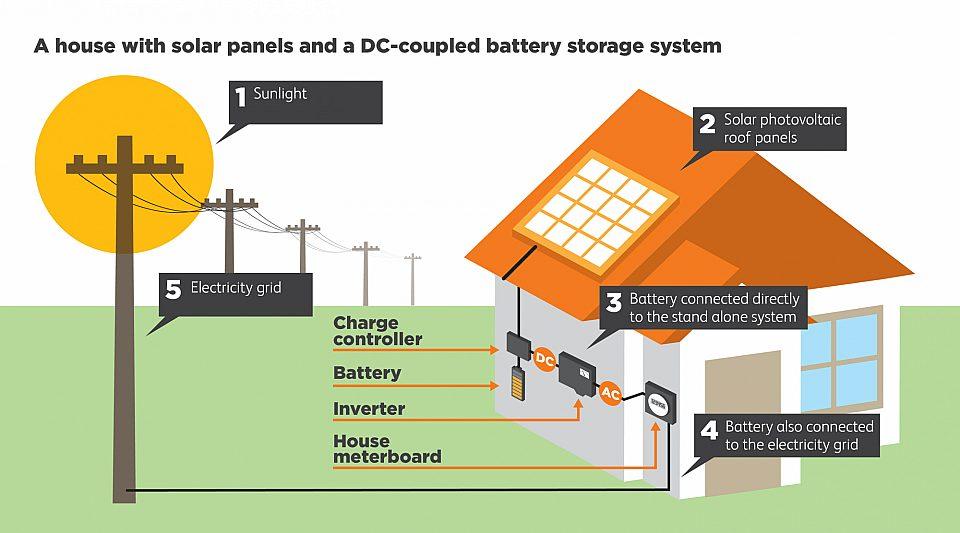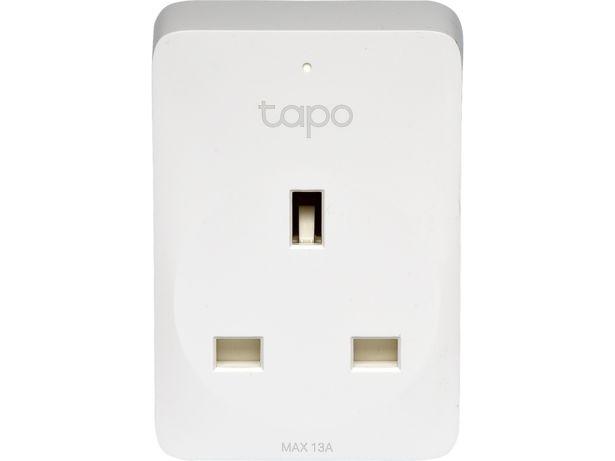How To Save Money With The South Australian Home Battery Scheme
Wahey! In SA it is possible to save money with batteries – thanks to the battery rebate.
For a long time now Australia has been drawing closer to the day when home batteries will pay for themselves.With the announcement ofSouth Australia’s battery subsidy scheme we know that day will soon come — unless the scheme’s lack of competition prevents battery prices from falling enough.
First I want to give warning to everyone who might be in a rush to buy solar batteries.Even with the large subsidy from the South Australian government it is still possible to lose money buying home batteries.You are only likely to come out ahead if:
Meet these criteria, take a gamble on the system significantly outlasting its warranty, and a subsidised home battery system might save you money.Just be aware that the return won’t be as good as rooftop solar without batteries, the average return from the Australian share market, or many home energy efficiency improvements.
Because battery sales may be about to take off I’m going to cover eleven things you need to consider before buying one.Then I’ll examine how good an investment they are.
Major Details Of The Battery Subsidy
While we still don’t have a full picture of South Australia’s battery subsidy, the main points are:
I don’t know why only ‘CEC Approved Retailers’ will be able to install subsidised batteries.This excludes some of the best solar installation companies in Adelaide. The State Government says it’s in favour of small business.Perhaps what they actually meant was they are in favour of a small number of businesses.Whatever the reason, as a result there is a lack of competition so we can’t be certain we will see prices low enough for solar batteries to pay for themselves soon.But we will get there in time as battery prices are falling rapidly.
Home Batteries = More Complicated Than Solar
The basics of rooftop solar aren’t too complex.Solar panels turn sunlight into electrical energy and your solar inverter turns it into the type of current homes use.But when you start to get into the details it is more complex and I’ve seen plenty of people get confused or tied up in knots through no fault of their own.
But batteries — they are a whole new level of complex.I’m here to help you out, but even I’m finding it difficult to keep everything straight.Working out whether or not a solar battery is likely to save you money is no easy task.Here are 11 factors to be considered:
Battery System Cost
There are a range of different home battery systems on the market.Fortunately we have a Battery Comparison Table with the details of every home battery system on the market in Australia we’re aware of.If you look at the prices you’ll see they range from $1,700 for the 2 kilowatt-hour Soltaro 2 up to $26,000 for the 11.6 kilowatt-hour Sunverge SIS.Most of these prices are estimates of the uninstalled retail price based on information manufacturers and importers have given us, but the Sunverge SIS has one of the few where we’ve been given the fully installed price.
Installed Cost
It would be nice if I could give you a single estimate of how much solar batteries cost to install so you could simply add that to the uninstalled price.Unfortunately, batteries are far too complex for that.There are several different ways to install them and plenty of variation in just how difficult they are to get working.When you are buying a battery what you’ll need to look at is the total installed price after subsidy.Later I will give an estimated installed price for a system based on prices I have seen advertised.
Usable Storage Capacity
Nearly all solar batteries suffer damage if they are completely drained.Because of this their usable capacity is less than their nominal capacity.The exception is the Redflow ZCELL, which has no problem at all being sucked dry since it is a zinc bromide battery and not lithium.Unfortunately for lithium batteries both their nominal and usable capacities will decline with use and over time.Most batteries warrant they will maintain at least 70% of their original capacity but some only promise 60%.So after 9 years a battery that started with 10 kilowatt-hours of usable storage might only have 6.1 usable kilowatt-hours and still be within the terms of its warranty.
Battery Cycles
For our purposes a battery cycle occurs when a battery system is fully charged and then its usable capacity is then fully discharged.On average home batteries are cycled less than once per day.If your solar battery becomes part of a virtual power plant this may raise the number of cycles above one.Most battery warranties are for 10 years but some cover a set number of cycles instead.For example Sonnen’s warrants its battery systems for 10 years or 10,000 cycles — which. ever comes first.This means you could average 2.7 cycles a day and still not hit 10,000 before the warranty runs out.This is far more than you actually need as most homes use less than one cycle a day.
Cost Per Warranted Kilowatt-Hour With One Cycle Per Day
Differences in nominal storage capacity, usable storage capacity, and warranties make it difficult to compare battery systems on price.To simplify things we have included the cost per warranted kilowatt-hour when cycled once per day on our battery comparison table.The result for every battery system on the table is on the graph below.It starts at 20 cents per kilowatt-hour for the DCS PV 13.5 and goes all the way to $1.07 for the Hansol AIO 7.2:
Three Ways To Install Battery Systems
The three different colours in the chart above represent three types of battery systems:
If you already have a solar power system, then getting one of the battery systems in dark red on the chart is the simplest option as they retrofit to any existing solar system and you won’t need to get rid of your existing solar inverter.But this doesn’t mean you shouldn’t consider other options.For example, you may consider it worthwhile to replace an old inverter with a new hybrid inverter with a fresh warranty.
If you don’t have a solar power system2 then you have nothing to lose by considering all battery system types when working out which is best for you.
Installed Cost Per Kilowatt-Hour
It is possible to get battery systems installed for around $1,000 per kilowatt-hour.While not all the installers making these kinds of offers are what I would call reputable, reputable ones are definitely among them.
But looking at wholesale pricing, I don’t see how it’s possible to make a sustainable margin installing solar batteries at that price and I don’t think anyone is.To me it looks like installers are simply positioning themselves in the battery market, discouraging competition, and building up experience and goodwill ready for when batteries take off — such as when South Australia introduces a massive battery subsidy.I feel bad for those that spent money preparing to become battery installers and are now effectively locked out of the market because they aren’t one of the few businesses permitted to install subsidised systems.
I’m sure the approved companies are carefully considering what kind of deals they will offer over the next few months.I hope that we’ll see similar low prices for systems that attract the subsidy.But if we don’t see them in the next few months presumably all we’ll have to do is wait, as solar batteries will continue to fall in price.
Be Wary When It Comes To Solar & Battery Packages
While the details aren’t yet released, it will be possible to get a low-interest loan for the balance of installed battery system price.If you get solar panels installed at the same time it will can be covered by the same loan.For this reason, if you need solar too, it makes sense to get a package deal.But be wary of companies who offer a great deal on a battery as cover for charging you too much for a solar system.Make sure it’s not possible to get a good quality solar and battery for a better price by getting them separately.Also watch out for anyone who makes the return from batteries sound better than it is by blending the payback of solar and batteries together.
Battery Size And Subsidy
The battery subsidy is $500 per kilowatt-hour of storage or $600 for pensioners and most people who receive Centrelink payments.While it hasn’t been make clear yet, I am confident this will apply to the nominal capacity and not the usable capacity of battery systems.A battery has to have at least 2.5 kilowatt-hours of capacity to receive the subsidy and the maximum amount of subsidy received for a system is $6,000.So it tops out at 12 kilowatt-hours (or 10 kilowatt-hours for pensioners and Centrelinkers).

Despite this it can make sense to get an even bigger battery — provided your electricity consumption is high enough.
Backup Capability
Not all battery systems work during a blackout.And yes, this does sound dumb.If you want backup capability — and most people do — you usually have to pay extra for it.I think many people overrate how useful backup capability is.Rather than explain why here I’ll just note that when it comes to working out how good an investment subsidised batteries are I’m not going to bother to place a value on it.But please feel free to add in any value you think is right.Just write it on your screen with a marker pen.Don’t worry —you can always liquid paper it out later.
Capacity Factor
If you buy a large battery with 13.5 kilowatt-hours of usable storage and then only use 4.5 kilowatt-hours per night, you only use one-third of the battery’s capacity. Its capacity factor is one-third or 33%.The higher the capacity factor the faster it will pay for itself, but smaller batteries cost more per kilowatt-hour.So it can be more cost-effective to use a larger battery at a capacity factor of 80% and not a smaller battery at a capacity factor of 95%.
Two things that determine a battery’s capacity factor are:
Electricity Tariffs And Batteries
As far as I am aware, South Australia does not have the year round time-of-use tariffs, common in other states, that can improve the economics of batteries.
Demand tariffs are available and these may make sense for batteries.Looking at AGL’s demand tariff plan, which is the one with the highest feed-in tariff of 16.3 cents, I see that after discounts they charge 31 cents per kilowatt-hour at all times. On top of that you have to pay a demand charge.This varies depending on the peak power you hit but is a minimum of 31.57 cents a day.It is theoretically possible for a battery system to keep this charge at the minimum by ‘lopping the peaks’.But in practice homes with battery systems generally use very little grid electricity, so the low usage rates are likely to have little value.Also, if the battery’s priority is to maximise self consumption, it may not have enough charge available to lop peaks consistently.For these reasons I will use a standard tariff when considering potential savings from a solar battery system.
The large majority of South Australian homes have a standard tariff which charges a flat rate per kilowatt-hour of grid electricity used.While the amount varies depending one which retail electricity plan a household had, after discounts, it’s typically around 38 cents.
Solar Feed-In Tariffs And Batteries
The higher your solar feed-in tariff the less value a home battery gives.This is because using a kilowatt-hour of stored electricity at night may save you 38 cents, but storing that energy costs you the feed-in tariff that you would have otherwise gained.So if your feed-in tariff was 16.3 cents then with a 100% efficient battery you would only save 21.7 cents per kilowatt-hour of stored electricity you use.That’s the 38 cent cost of grid electricity minus the 16.3 cent feed-in tariff forgone.Unfortunately, no battery is 100% efficient.
It is possible to get a feed-in tariff of 20 cents from AGL.If that is not suitable or becomes unavailable AGL also offers 16.3 cents.If your solar power system produces enough surplus electricity to regularly fully charge a battery then it likely makes sense for you to have a feed-in tariff of 16.3 cents or more.If your feed-in tariff is low it does not mean it makes more economic sense for you to get a battery.It most likely means you should get a higher feed-in tariff.
Virtual Power Plant Participation
To receive the subsidy a battery system must be capable of becoming part of a virtual power plant in the future.It is not yet clear how much financial benefit this may give people.It’s even possible unscrupulous operators will shorten the lives of batteries without providing adequate compensation.Virtual power plants are currently only under trial and you can’t sign up an independent battery at the moment.(Although you can join Reposit if you have a compatible battery.)If virtual power plants make home batteries profitable in the future then the time to let that influence your decision on whether or not to get a solar battery would be in the future.
Size Your Battery Part #1: How Many kWh Do You Export?
If your solar system isn’t regularly producing enough surplus electricity to charge your battery during the cloudiest months of the year you won’t be able to use it at high capacity.Not unless you charge it from the grid – and that doesn’t make economic sense in South Australia at the moment.
If you already have a solar power system it’s not difficult to estimate how much surplus electricity it generates during the lowest output months of the year: May, June, and July.All you need to do is:
If you have a solar system with 5 kilowatts of north facing panels and your electricity consumption is fairly typical, then there’s a good chance you’ll find it sent an average of 8.5 kilowatt-hours of electricity into the grid each day over May, June, and July.You may think this means you can install a solar battery with 8.5 kilowatt-hours of usable storage capacity and use it at a high capacity factor over the whole year, but it’s not that simple.Because of losses that result from charging and discharging it is necessary to put more energy into a battery than you can get out.For this reason it is necessary to look at the round trip efficiency of a battery system.
(Image: Lithium Ion Battery Test Centre)
The chart above shows round trip efficiencies for a variety of brand new battery systems determined by the Canberra Battery Test Centre.The result for the SimpliPhi battery may be better than indicated as they found they didn’t install it correctly.The average round trip efficiency of the lithium batteries is 92%.The Powerwall 2 isn’t on that chart.Tesla gives its round trip efficiency as 88% but I have access to figures that suggest its actual performance is worse.However, I will wait and see if it improves after its master gets tired of trying to find ways of tricking it into making a mistake.
Because the efficiencies of all solar batteries are likely to get worse over time, I expect lithium batteries will have overall losses of at least 10%. So if your solar power system exports an average of 8.5 kilowatt-hours a day in the lowest output months of the year then your battery’s usable capacity should be about 90% of that, which is 7.7 kilowatt-hours or less, if you wish to use your battery at high capacity from the start.On the other hand, because the capacity of lithium and most other batteries will decay over time, you may wish to install a solar battery with larger usable capacity to allow for this.I would expect lithium batteries to have lost at least 10% of capacity by the middle of their lifespan.
The Redflow battery on the chart above has the worst efficiency because it uses zinc bromide chemistry instead of lithium.While its efficiency is also expected to decline over time it has the advantage that its storage capacity won’t.
Average Solar Exports By System Size
If you don’t have solar power yet and are planning to get batteries I suggest installing as much .capacity as you practically can.If you have 3 phase power and a large roof you shouldn’t have a problem installing enough solar to fully charge a large battery.If you have single phase power as most people do then you have two options:
Without existing solar you won’t have a record of how many kilowatt-hours of surplus solar electricity you export, but it can be estimated.Over the three least sunny months of the year the average household with a 6.5 kilowatt solar system that uses electricity for heating is likely to export around 11 kilowatt-hours of surplus solar electricity a day that could instead be used to charge a battery.The amount of surplus electricity will be less if:.
The amount will tend to be more if:
So the actual amount could range from over 14 kilowatt-hours to under 8 kilowatt-hours.
If an average home had only 5 kilowatts of solar panels instead of 6.5 then I would expect it to produce an average of around 7.5 kilowatt-hours of surplus electricity per day during the worst months of the year with a range from under 5.5 to over 9.5 kilowatt-hours depending on the household’s characteristics.
Size Your Battery Part #2: How Much Electricity Do You Use After Dark?
Assuming you already have solar, knowing how much surplus solar electricity you export determines what size battery you can fully charge most days.The next step is to calculate your average overnight electricity consumption to see whether you will drain the battery most nights. To do this you should look at your average grid consumption during the months of low grid electricity use.
I recommend looking at your electricity bills for the past 12 months and finding the three months in which you had the lowest grid electricity consumption.Add your grid electricity consumption for those three months and then divide by the total number of days in them.This will give you your average daily grid electricity consumption for those months which will mostly be from a couple of hours before sunset when solar output starts to rapidly fall off to a couple of hours after sunrise when solar electricity output starts to become significant.It will also include some grid electricity use during the day which will mostly occur on cloudy days.
If you don’t have solar then you can or read your meter at sundown, then again at sunrise. Subtract the two and you’ll have last night’s electricity usage.
A typical household with a 6.5 kilowatt solar system may use an average of 7 kilowatt-hours of grid electricity a day during the months of lowest grid electricity consumption.This appears to suggest that if they install a battery system with 7 kilowatt-hours of usable storage they will be able to use it at high capacity.But most household’s electricity use is quite variable from day-to-day.It’s common for grid consumption on one day to be 50% higher than average and the next day to be 50% lower than average.So for this reason, to use a solar battery at high capacity through the year its usable storage capacity should be about 75% of the average daily grid electricity consumption for the lowest 3 months.So instead of 7 kilowatt-hours of usable battery storage they should get around 5.25 kilowatt-hours.
Example Solar Systems — LG Chem RESUs
I am going to pick a couple of example solar battery systems and estimate how much their installed cost will be.I’m not going to put any effort into selecting a battery system.I’m simply going with the most commonly installed one in Australia which is the LG Chem RESU.I will consider the RESU6.5 with 5.9 kilowatt-hours of usable storage and the RESU10 with 8.8 kilowatt-hours of usable storage.These will specifically be the lower voltage RESUs, but the results for the RESU10 should be similar to those for the higher voltage RESU10HV.
I am going to assume the pre-subsidy installed cost of the larger RESU will be around $1,000 per nominal kilowatt-hour and will cost $10,000.And I’ll assume the RESU 6.5 will cost slightly more per nominal kilowatt-hour and will cost $8,000 installed.
Installed Cost After Subsidy
With a subsidy of $500 per nominal kilowatt-hour the RESU 6.5 will have an installed cost of $4,750.For pensioners and Centrelinkers the subsidy will be $600 per kilowatt-hour and its installed price will be $4,100.
For most households the installed cost of the RESU10 will be $5,100 and for Centrelinkers it will be $4,120.
Lifetime Kilowatt-Hours Of Storage
LG Chem RESUs come with a warranty for 10 years or:
Because their usable capacity diminishes over time and because most households are likely to cycle them less than once per day the warranty should last for the full 10 years.If they are cycled once per day at an average of 80% of its usable capacity when new, the amount of time required to reach the energy storage limits given in their warranty would be:
While the warranty is for a maximum of 10 years it is reasonable to expect the average battery system to last longer than this.But solar batteries are not like refrigerators where they may have a warranty of 2 years but we expect them to last at least 10.Batteries deteriorate with use and over time and survival beyond their warranty period will unfortunately be limited.I’ll be fairly optimistic and assume the average unit will survive for 15 years, which is 50% longer than what its warranty covers.I’m also going to optimistically assume the hybrid inverter (or battery inverter) will also last for 15 years even though it may only have a warranty of 5 years.While the electronics in inverters don’t decay in the same certain way the chemicals in batteries do, making no allowance at all for inverter replacement for 15 years is still optimistic.
Investment Comparison
There are a number of accounting methods to find the rate of return on an investment.While they can be useful in the right circumstances, they do rely on knowing what people’s cost of capital is, which can vary from person to person and can get very complex.So I am just going to work out how much money in electricity bill savings you will have at the end of a battery system’s estimated 15 year life.Then I’ll compare that to what you would have if you invested the money elsewhere.
Battery Savings Assumptions
I am using the following assumptions to find the return from our example battery systems.:
RESU6.5 Savings
With the above assumptions the household should have no problem using a RESU6.5 at a high capacity-factor.Because there will still be periods of particularly bad weather when solar electricity output is low and times when overnight electricity consumption is exceptionally low I will assume its capacity factor will be 90%.This means the household will use an average of 4.5 kilowatt-hours of stored electricity per day.With a feed-in tariff of 16.3 cents and 90% round trip efficiency they will have to forgo 18.1 cents in feed-in tariff for each kilowatt-hour of storage they use.This means each kilowatt-hour of storage will save them 19.9 cents on their electricity bills for a daily average of 89.6 cents.Over 15 years the savings will come to $4,910
RESU10 Savings
With an average daily electricity consumption of 11.5 kilowatt-hours during low output months the household would be able to use a RESU10 at high capacity.However, the number of days when bad weather would prevent it from being fully charged would be increased.So I will estimate its capacity factor will be 80%.This means they will use an average of 6 kilowatt-hours of storage a day for a daily saving of $1.19.Over 15 years this will save them a total of around $6,540.
Batteries Vs. Term Deposit
Now that I’ve worked out how much the two different sized systems will save on electricity bills I can compare the results to investing the money elsewhere.Because there are 2 system sizes and two subsidy levels — $500 per kilowatt-hour and $600 per kilowatt-hour — there are a total of four prices:
I’m going to show on a graph how much these amounts would equal in today’s money if they were invested in a term deposit for 15 years4 and compare them to the savings on electricity bills the batteries give.But to make the comparison fair I am going to assume all the battery savings were also put in a term deposit.
Looking at the graph we can see the following:
What Batteries Have To Beat
I’ve shown that, with fairly optimistic assumptions, it’s possible for a household that buys a battery to accumulate more money after 15 years than if they put the money into a term deposit.But there are plenty of people in South Australia who have better things to do with their money than to put it into a term deposit.The first thing I recommend is to get the larger battery.Because of the way the subsidy works there is very little difference in price and it provides a better return:
One thing batteries can’t beat in South Australia is rooftop solar.Even if you use no solar electricity yourself and send it all into the grid for a feed-in tariff you will still get a better return than from a battery at typical solar installation costs today.So if you are ever considering installing solar and a battery always consider if you would be better off just installing more solar.
A Word Of Caution
I’ve said it’s possible for subsidised solar batteries to pay for themselves under a specific set of assumptions.But there is no guarantee these assumptions are correct and I recommend being more pessimistic than me. I especially recommend pensioners, impressed by the extra subsidy they receive, carefully consider if they are likely to save money as their overnight electricity consumption is likely lower than average making it difficult for any battery to pay for itself.
If you delay you might lose a little money by not starting to save sooner.But if you dive in quick you might lose a lot.Of course, if you just want a solar battery and don’t care about the cost, please dive right in.I’ll be interested to see what happens.



